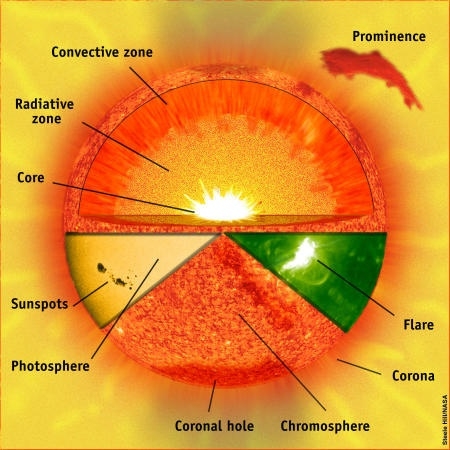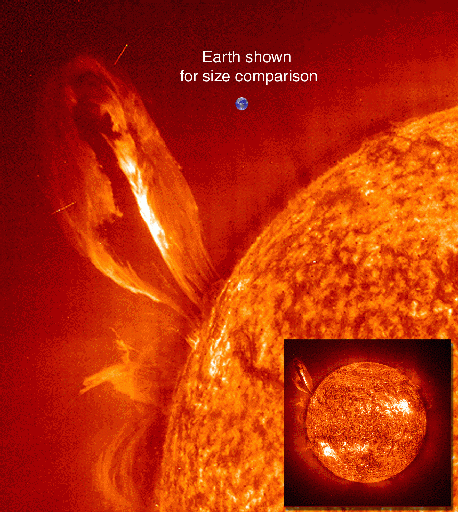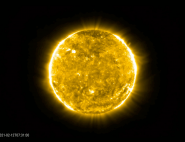Mission

Scientific Objectives
One of the main objectives of Soho is to observe vibrations induced by sound waves reverberating from the solar interior to the surface. Those waves move inside the Sun as sound waves in the air. The temperature, composition and deep movements of the Sun's interior influence the oscillation frequency and give invaluable information about conditions inside the Sun. Three instruments are destined to this science born in the eighties—"helioseismology".

The Sun's external atmosphere, the corona, extends up to several solar diameters. But because this corona is several million times less bright than the photosphere—the visible surface of the Sun—it can only be observed during solar eclipses by the moon. Only thanks to spatial instruments like Soho can we permanently observe the Sun's Ultraviolet or X radiation.

Lastly, a third set of scientific instruments is in charge of making in-situ measurements of the solar wind and its anisotropy detection.
Among the many results obtained about the interior of the Sun (helioseismology) and the external layers (chromosphere, transitional zone and corona), some must be mentioned:
- The Sun's centre rotation (core) seems to be one of a rigid body. The rotation speed is nearly the same as the surface one (GOLF).
- The sound velocity deduced from measurements is in agreement with the most recent solar models down to 0.1 solar radius, but there's a disagreement near the centre under 0.1 solar radius (GOLF).
- The discovery of the localization of the origin of the fast solar wind (SUMER) on the border of the chromospheric network.
- The first determination of the corona's temperature above a polar hole, source of the fast solar wind (SUMER/CDS).
- The measurements of the electronic density, the temperature and plasma velocity of the transitional regions in different structures (SUMER/CDS).
- The very great temporal instability of the Sun at all spatial scales (EIT).
- The detection and cartography of ionized helium in the low corona producing an abrupt elevation of the solar border in the coronal holes (macrospicules, EIT).
- The discovery of the very great number of coronal mass ejections (CME) (several per day) which are activated at the base of the atmosphere (often with a filament eruption) and the survey of their propagation in space (EIT/LASCO).
- The observation of more than 200 sungrazing comets (LASCO).
- The first cartography of the hydrogen repartition in the heliosphere and its evolution during the solar cycle (SWAN).
- The detection of active regions on the hidden side of the Sun (SWAN).
- The comets detection by the L
 radiation signature of their outgassing (SWAN).
radiation signature of their outgassing (SWAN).
Mission
Soho, first cornerstone, with Cluster, of the ESA Horizon 2000 programme, is part of the European contribution to international scientific programmes STSP and ISTP studying the Sun-Earth relations. The several mission extensions of Soho after its nominal lifetime enabled to cover the entire solar cycle.
Soho (Solar and Heliospheric Observatory) is a joint mission of the European Spatial Agency and NASA. Launched in 1995, the Soho probe is on a halo orbit around the Lagrange point L1 at 1.5 million km on the sunward side of the Earth. From this localization, Soho observes the Sun 24 hours a day.
France participated greatly to the realization of 5 out of the 12 instruments intended to study several aspects of the Sun: helioseismology, the electromagnetic radiation, the plasma and the solar wind.
The Soho satellite was built in Europe by an industrial consortium led by Matra, while the scientific instruments were provided by European and American scientists and funded by their national institutions. Nine of the instrument Principal Investigators (PIs) are European and three are American. NASA was responsible for the launch and mission operations. The NASA DSN network is used to control the satellite and receive data. The mission control is based at the Goddard Space Flight Center in Maryland.


